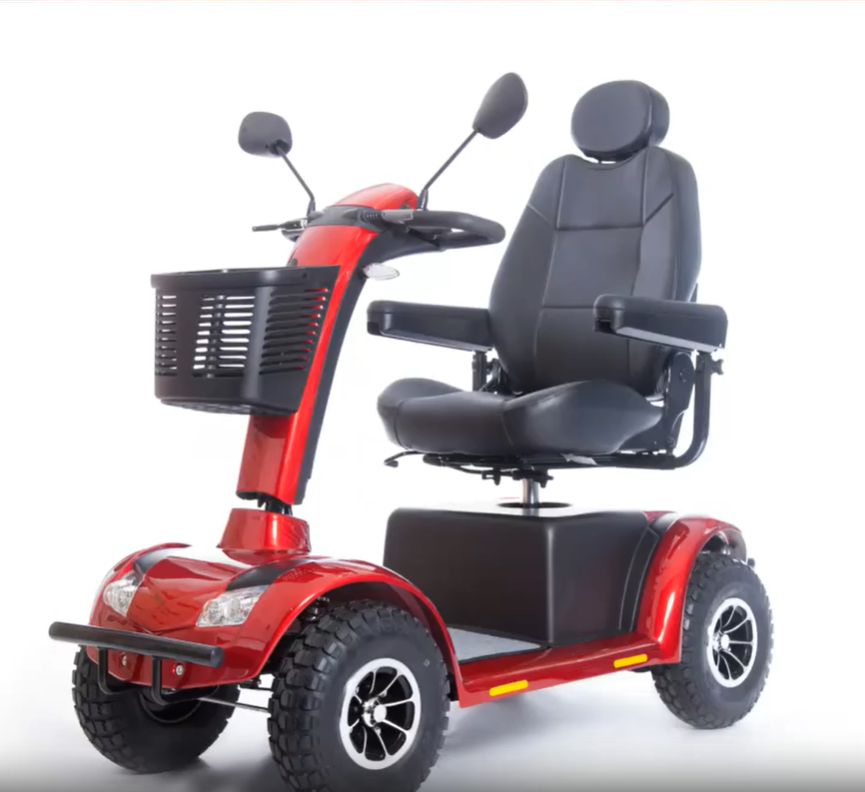Electric Wheelchairs: Enhancing Mobility and Independence
Electric wheelchairs, also known as power wheelchairs, are motorized mobility devices designed to provide independence and improved quality of life for individuals with limited mobility. These innovative devices offer a range of benefits, from increased freedom of movement to enhanced accessibility in various environments. This article will explore the key aspects of electric wheelchairs, their features, and their impact on users' daily lives.

The main components of an electric wheelchair include:
-
Electric motors: Usually located in the wheel hubs or drivetrain
-
Rechargeable batteries: Provide power to the motors
-
Controller: Interprets user input and manages power distribution
-
Seating system: Offers comfort and support for the user
-
Frame: Provides structure and houses the components
Electric wheelchairs typically operate on rechargeable batteries that can last for several hours of continuous use. The range and speed of the wheelchair depend on factors such as battery capacity, terrain, and user weight.
What are the benefits of using an electric wheelchair?
Electric wheelchairs offer numerous advantages for individuals with mobility impairments:
-
Increased independence: Users can move freely without relying on others for assistance.
-
Reduced fatigue: The motorized system eliminates the physical strain associated with manual wheelchairs.
-
Improved accessibility: Electric wheelchairs can navigate various terrains and overcome obstacles more easily than manual wheelchairs.
-
Enhanced comfort: Many models feature adjustable seating, suspension systems, and ergonomic designs for extended use.
-
Customization options: Users can choose from a variety of features and accessories to meet their specific needs.
-
Increased range: Electric wheelchairs can cover longer distances than manual wheelchairs, expanding the user’s mobility.
These benefits contribute significantly to the user’s overall quality of life, enabling them to participate more fully in work, social activities, and daily tasks.
What types of electric wheelchairs are available?
Electric wheelchairs come in various designs to accommodate different needs and preferences:
-
Rear-wheel drive: Offers stability and maneuverability, ideal for outdoor use.
-
Mid-wheel drive: Provides a tight turning radius, suitable for indoor navigation.
-
Front-wheel drive: Excels in obstacle climbing and outdoor terrain.
-
Folding electric wheelchairs: Compact and portable for easy transportation.
-
Heavy-duty electric wheelchairs: Designed for larger individuals or rough terrain.
-
Standing electric wheelchairs: Allow users to elevate to a standing position.
Each type has its unique advantages, and the choice depends on the user’s specific requirements, lifestyle, and environmental conditions.
How do electric wheelchairs improve accessibility?
Electric wheelchairs play a crucial role in enhancing accessibility for individuals with mobility impairments:
-
Public spaces: Users can navigate through shopping centers, museums, and parks more easily.
-
Workplace accommodation: Electric wheelchairs enable individuals to maintain employment and perform job duties efficiently.
-
Home accessibility: With their compact design and maneuverability, electric wheelchairs allow users to navigate within their homes more freely.
-
Transportation: Many public transportation systems are equipped to accommodate electric wheelchairs, increasing travel options for users.
-
Outdoor activities: All-terrain models enable users to participate in outdoor recreational activities.
By improving accessibility, electric wheelchairs contribute to greater social inclusion and equal opportunities for individuals with disabilities.
What factors should be considered when choosing an electric wheelchair?
Selecting the right electric wheelchair involves considering several factors:
-
User’s physical condition and mobility needs
-
Intended use (indoor, outdoor, or both)
-
Battery life and charging requirements
-
Weight capacity and dimensions
-
Seating comfort and support features
-
Control options (joystick, head array, sip-and-puff)
-
Portability and storage requirements
-
Customization options and accessories
-
Warranty and after-sales support
-
Cost and insurance coverage
It’s essential to consult with healthcare professionals, such as occupational therapists or physical therapists, to determine the most suitable electric wheelchair for individual needs.
Electric wheelchairs available in the market
| Product | Provider | Key Features | Cost Estimation |
|---|---|---|---|
| Quantum Edge 3 | Pride Mobility | Mid-wheel drive, advanced suspension, 4.5 mph top speed | $3,000 - $6,000 |
| Permobil F3 | Permobil | Front-wheel drive, power tilt/recline, 6 mph top speed | $6,000 - $11,000 |
| Quickie Q700 M | Sunrise Medical | Mid-wheel drive, all-terrain capability, 8 mph top speed | $7,000 - $13,000 |
| Jazzy Air 2 | Pride Mobility | Elevating seat, compact design, 4 mph top speed | $3,500 - $7,000 |
| Invacare TDX SP2 | Invacare | Stability Lock technology, 7.5 mph top speed | $5,000 - $10,000 |
Prices, rates, or cost estimates mentioned in this article are based on the latest available information but may change over time. Independent research is advised before making financial decisions.
Electric wheelchairs have revolutionized mobility for individuals with disabilities, offering independence, comfort, and improved quality of life. As technology advances, we can expect to see further innovations in electric wheelchair design, making them even more versatile and user-friendly. By understanding the features, benefits, and considerations associated with electric wheelchairs, users and caregivers can make informed decisions to enhance mobility and accessibility in daily life.






